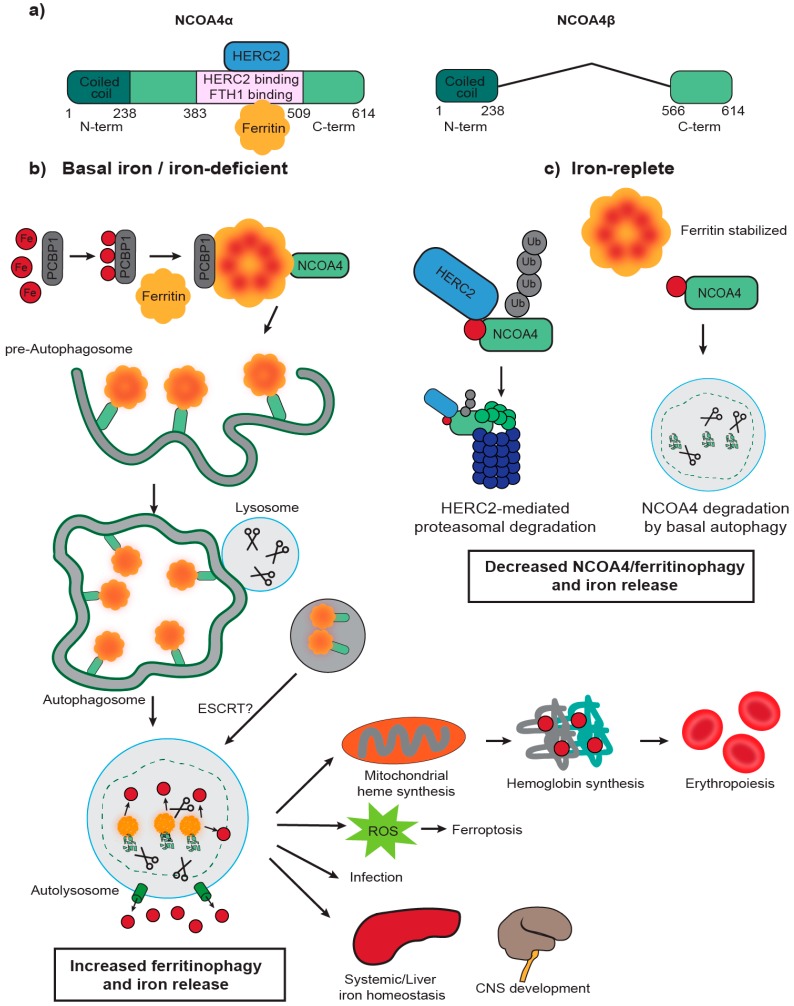Figure 1.
NCOA4-mediated ferritinophagy pathway is regulated by intracellular iron. (a) Schematic of NCOA4 transcript variants in humans: NCOA4α and NCOA4β. NCOA4α is a 614 Aa protein (70 kDa) with an N-terminal coiled coil domain and a C-terminal domain that contains a FTH1 and HERC2 binding domain (Aa 383–509). NCOA4β (286 Aa, 35 kDa) shares with NCOA4α the N-terminal domain and a portion of the C-terminal domain. (b) Poly rC—binding protein 1 (PCBP1) binds to iron (Fe) and delivers it to ferritin. Fe is stored in ferritin complexes containing ferritin heavy and light chains. NCOA4 binds to ferritin through its C-terminal domain and delivers it to the nascent autophagosome. The mechanisms involved in NCOA4 delivery to the autophagosome are unclear but could involve non-canonical LIR motifs. Fusion of the autophagosome with the lysosome leads to degradation of ferritin and iron release in a process known as “ferritinophagy.” Some studies also suggest alternative pathways for lysosomal delivery of NCOA4-ferritin complexes involving the endosomal pathway (endosomal sorting complex required for transport: ESCRT). Iron is exported to the cytosol where it can be used in several physiological processes that involve iron such as mitochondrial heme synthesis and erythroid differentiation. Increased ferritinophagy flux correlates with reactive oxygen species (ROS) production and a type of cell death known as ferroptosis. Increased ferritinophagy flux has also been observed in certain E. coli urinary tract infections [30]. Finally, iron is also likely required for other physiological processes like liver iron homeostasis and central nervous system (CNS) development, although further research is required to clarify NCOA4’s role in the CNS disease under normal and pathological conditions such as neurodegeneration. (c) NCOA4 levels and ferritinophagy are regulated by intracellular iron levels. In iron-replete conditions, HERC2 (an E3 ubiquitin ligase) binds NCOA4 in an iron-dependent manner and mediates its proteasomal degradation. NCOA4 can also be degraded by basal autophagy. Decreased NCOA4 levels lead to stabilization of ferritin by decreased ferritinophagy flux and decreased intracellular levels of iron.

